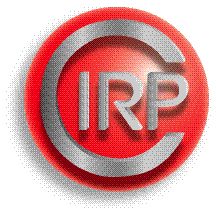Synonyms
Definition
The bonding material is the material that secures the abrasive grains relative to each other in order to form the shape and structural integrity of the abrasive tool such as a grinding wheel, bonded abrasive segment, or abrasive belt.
Theory and Application
The DIN 8589: 2003 classifies processes such as grinding, belt grinding, honing, lapping, free abrasive grinding, and abrasive blast cutting under the grouping of “machining with geometrically undefined cutting edges.” A further clustering of the aforementioned processes can also be presented, namely, that of machining with bonded abrasives encompassing grinding, belt grinding, and honing, with the remaining processes largely falling under the category of free or unbonded abrasive machining. Therefore, it is clear that the science underpinning bonding materials is core to the development of bonded abrasive tools (Jackson and Davim 2011; Webster and Tricard 2004).
It can be...
References
Buhl S (2012) Failure mechanisms of heavily-loaded brazed diamonds. Dissertation ETH No. 20386. https://doi.org/10.3929/ethz-a-007333271. Accessed 7 Mai 2018
DIN 4000-132: (2011) Sachmerkmal-Listen – Teil 132: Schleifwerkzeuge mit Diamant oder Bornitrid mit Bohrung [Tabular layouts of properties – Part 132: Super abrasive products with bore]. Beuth, Berlin (in German)
DIN 8589-0 (2003) Fertigungsverfahren Spanen – Teil 0: Allgemeines Einordnung, Unterteilung, Begriffe [Manufacturing processes chip removal – Part 0: General. Classification, subdivision, terms and definitions]. Beuth, Berlin (in German)
DIN EN 13236 (2017) Sicherheitsanforderungen für Schleifwerkzeuge mit Diamant oder Bornitrid; Deutsche und Englische Fassung prEN 13236:2017 [Safety requirements for superabrasive products; German and English version prEN]. Beuth, Berlin
DIN ISO 525 (2015) Schleifkörper aus gebundenem Schleifmittel – Allgemeine Anforderungen (ISO 525:2013) [Bonded abrasive products – General requirements]. Beuth, Berlin (in German)
Jackson MJ, Davim JP (2011) Machining with abrasives. Springer, New York/Dordrecht/Heidelberg/London
Jackson MJ, Hitchiner MP (2013) High performance grinding and advanced cutting tools. Springer, New York/Dordrecht/Heidelberg/London
Klocke F (2009) Manufacturing processes 2, grinding, honing, lapping, RWTH edition. Springer, Berlin/Heidelberg
Malkin S, Guo C (2008) Grinding technology, theory and applications of machining with abrasives, 2nd edn. Industrial Press, New York
Marinescu ID, Rowe WB, Dimitrov B, Ohmori H (2012) Tribology of abrasive machining processes. William Andrews (Elsevier), Waltham
Rowe WB (2009) Principles of modern grinding technology. William Andrew (Elsevier), Burlington
Webster J, Tricard M (2004) Innovations in abrasive products for precision grinding. CIRP Ann Manuf Technol 53(2):597–617
Author information
Authors and Affiliations
Corresponding author
Editor information
Editors and Affiliations
Section Editor information
Rights and permissions
Copyright information
© 2018 CIRP
About this entry
Cite this entry
O’Donnell, G., Kuster, F. (2018). Bonding Materials for Abrasive Tools. In: Chatti, S., Tolio, T. (eds) CIRP Encyclopedia of Production Engineering. Springer, Berlin, Heidelberg. https://doi.org/10.1007/978-3-642-35950-7_16698-4
Download citation
DOI: https://doi.org/10.1007/978-3-642-35950-7_16698-4
Received:
Accepted:
Published:
Publisher Name: Springer, Berlin, Heidelberg
Print ISBN: 978-3-642-35950-7
Online ISBN: 978-3-642-35950-7
eBook Packages: Springer Reference EngineeringReference Module Computer Science and Engineering


